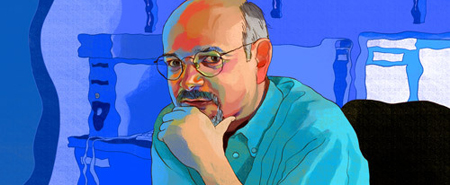My friend and fellow club member Eric Skillman, an associate art director at the Criterion Collection, has been interviewed over at WizardUniverse.com. They’re rather in need of a proofreader, but Eric’s intelligence and charm nevertheless come through.
For example I’m looking over the DVD’s on my desk —[Aikira Kurosawa’s] “Drunken Angel”, which is one we did with Jock (The Losers, Green Arrow: Year One, Faker). There’s a scene towards the end of the film where the characters are wresting around and the Matsunaga character knocks over into some cans of paint, and the paint spills in an artful kind of way and what was his black suit gets covered in white paint, so its a sort of a transformative moment where he’s rebelling against the Yakuza influence, which is represented by the snazzy black suit that he’s been wearing and he becomes purified in that scene. We took that and said that sort of scene and idea is what we want to riff off of. We took that to Jock, along with this idea that there’s this sump thing in the middle of the town that’s full of mud and its like this sucking hole that the center of town is being sucked down by the Yakuza influence, so we said maybe give us a backdrop of this muddy, crappy, sumpy grossness then a slosh of white paint with the character sort of crawling through it, and then he took that and abstracted it one step further and did his thing and then that became the cover.
Do freelance artists usually get notes like that?
Usually.
The Wizard Q&A: Eric Skillman, by David Paggi, posted 2/11/2008.
To see more of Eric’s work (other than at your local video store) and to read a lot more about his design process, see his fine, upstanding blog: Cozy Lummox.









